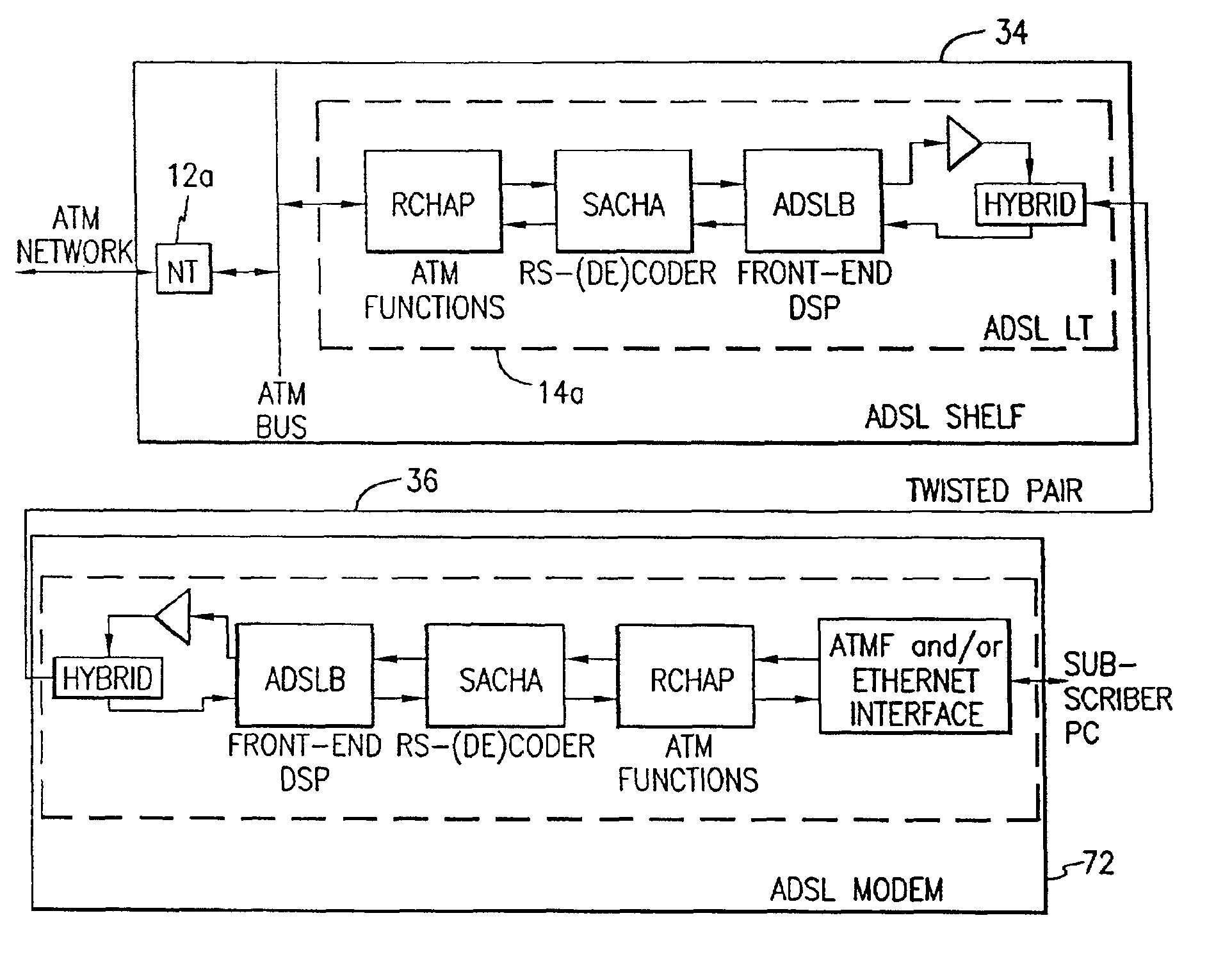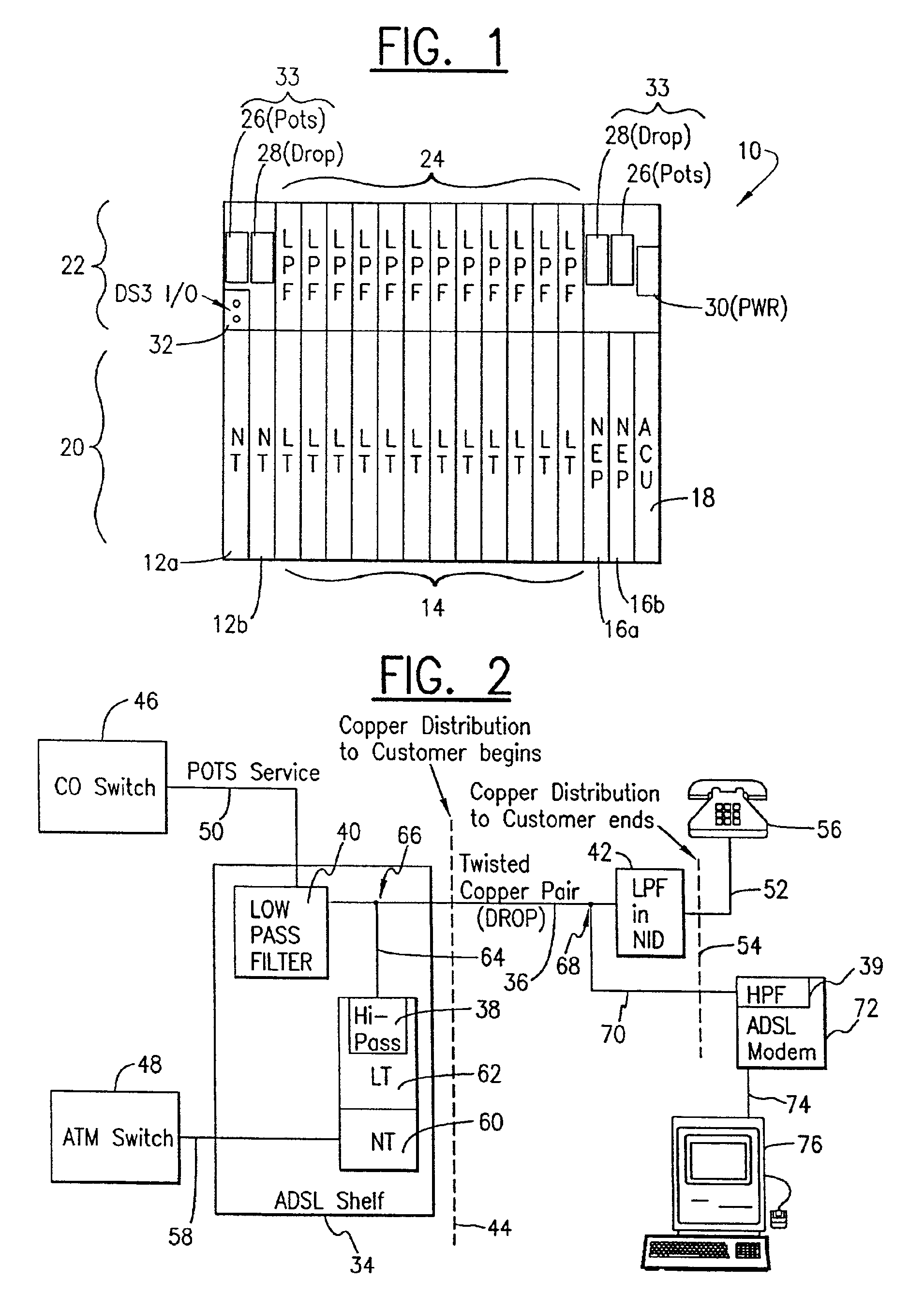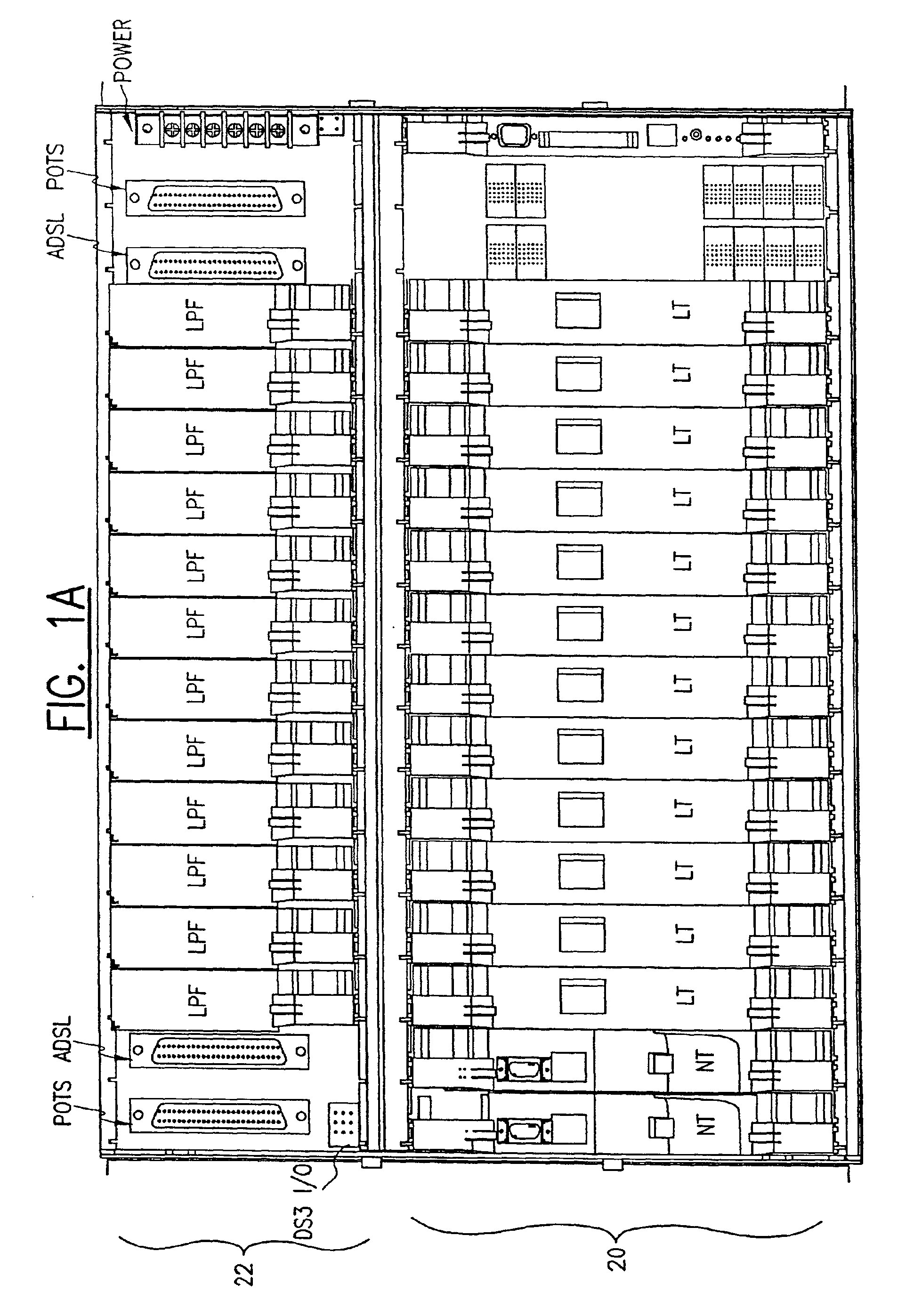[0009]Still another object of the present invention is to provide such an architecture in such a way as to provide
maintainability of the
digital subscriber line hardware without interfering with lifeline
telephony service to subscribers.
[0012]ATM and xDSL have not previously been combined in this way to create a complete, viable, general-purpose access
communications system for local loops. In fact, ADSL itself has only recently become feasible, since it was not clear how to use the bandwidth above the
telephony spectrum (up to 3.4 kHz) over long distances on existing
copper pairs. New LSI (large-scale integration) and DSP (
digital signal processing) technologies have now made ADSL practical at multi-
megabit per second rates, and the demand for high-speed data services (particularly
Internet access) has made it necessary. Local telcos are also under tremendous pressure to relieve existing
telephone switching systems from the overwhelming Internet / modem traffic they were never designed to
handle. By using the
system described in this disclosure, operating companies can simultaneously remove congestion from
telephony switches, offer high-speed services to customers as a new revenue producer, and expand the types of services (i.e., QoS classes) offered to fit customers' individual needs.
[0013]The full bandwidth flexibility of ATM provides the framework to support a wide range of services required by different applications and achieves high-
resource utilization. It is particularly advantageous in the present invention that ATM provides the possibility to reserve resources in the network to meet the
quality of service requirements of the applications desired by the subscribers. This is particularly so in the present invention, because of the nature of, e.g., asymmetric digital subscriber lines wherein a very large bandwidth is dedicated downstream with a relatively small bandwidth reserved for upstream communications from subscribers. In that case, with an architecture having a large number of subscribers connected to an upstream
network element, there can be, depending on the number of subscribers potentially connected to the
network element, a severe bandwidth contention problem in the upstream direction. This can be balanced to some extent, according to the present invention, by offering differing qualities of service to the subscribers, which can be implemented by telcos using different rate structures.
[0015]The second aspect of the present invention allows telephone subscribers to obtain efficient, high speed digital services to their homes and businesses over existing telephony
copper pairs—while conventional analog “lifeline” telephony services are simultaneously provided with
high integrity on the same pairs.
[0017]By providing the lowpass filter separately from the
digital subscriber line modem, the modem can be maintained separately and without interfering with the lifeline telephony services, thereby providing the above-mentioned
high integrity. A similar separation of the telephony services from the
wideband services can be accomplished in the shelf as well, by providing a separate lowpass filter that is not part of the line termination of the
wideband service in the shelf.
[0031]Thus, the present invention provides a high-speed digital access
communications system, covering a wide range of configurations and applications, using new packet and xDSL technologies with the possibility to offer subscribers the variety of QoS classes defined, for example, in the various ATM Forum specifications. Since it uses the existing
copper cable
plant already deployed throughout the developed world, the
system is economical—allowing Local Exchange Carriers to compete with alternative service providers such as CATV companies (which are deploying heavily overbooked
cable modem technology on their coax cable
plant). The system also preserves the reliability and simplicity of analog “lifeline” POTS, so that subscribers and telephone operating companies are not required to change the way voice services are provided.
 Login to View More
Login to View More  Login to View More
Login to View More 


